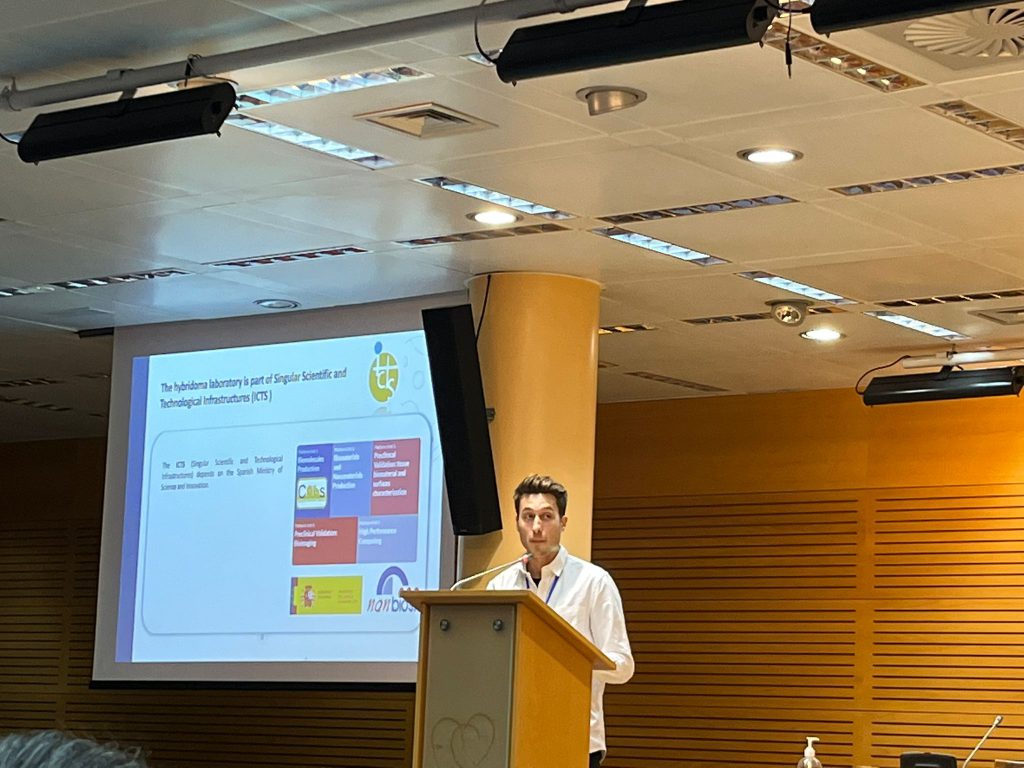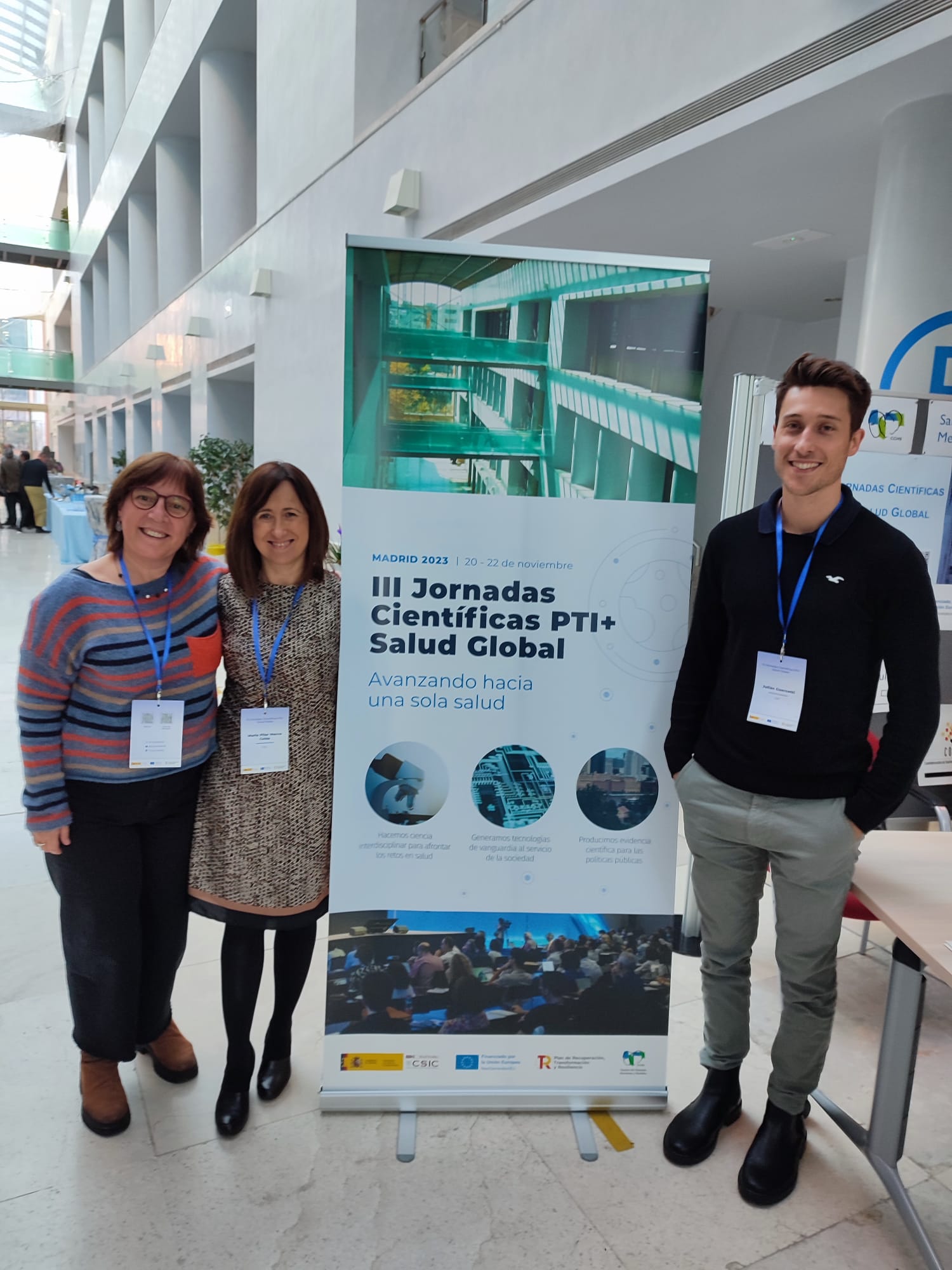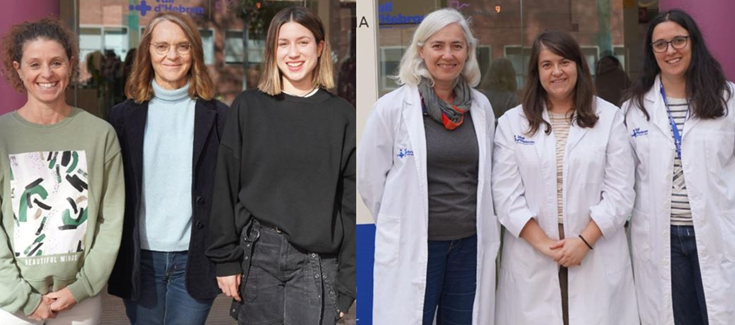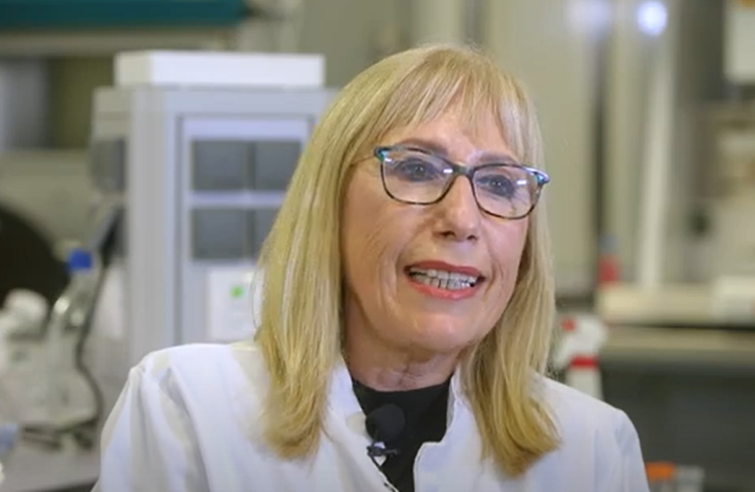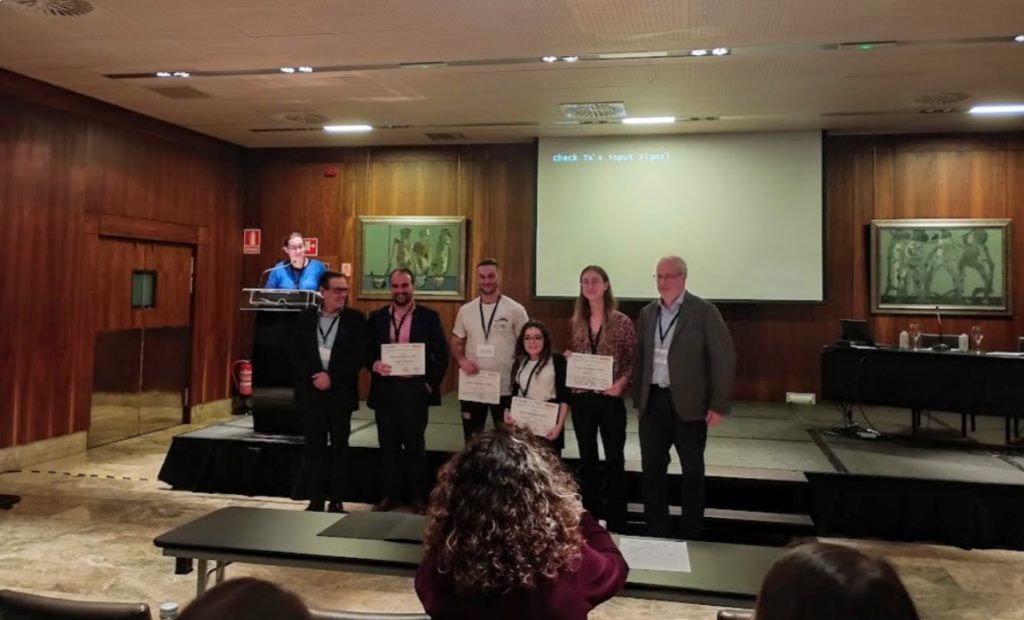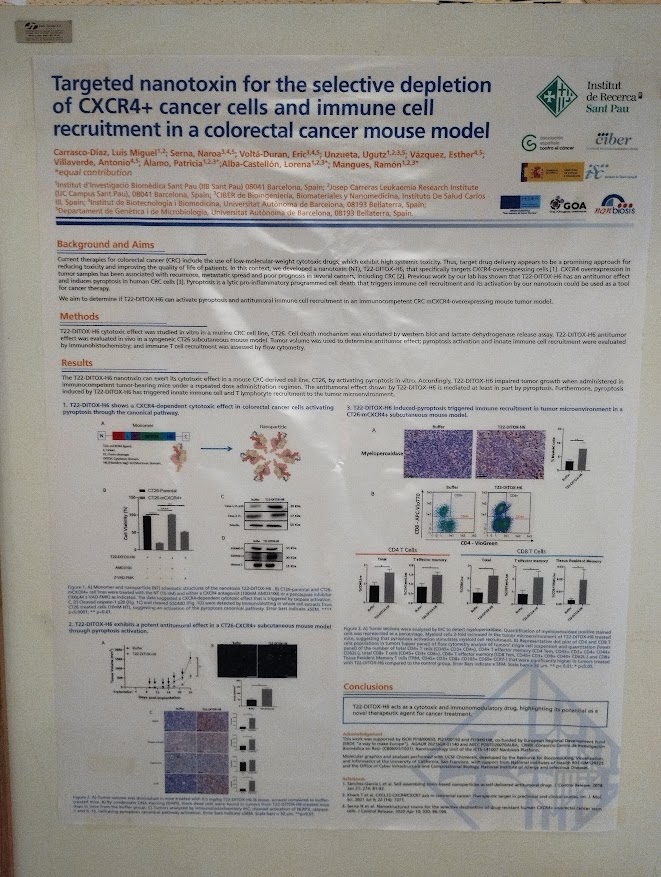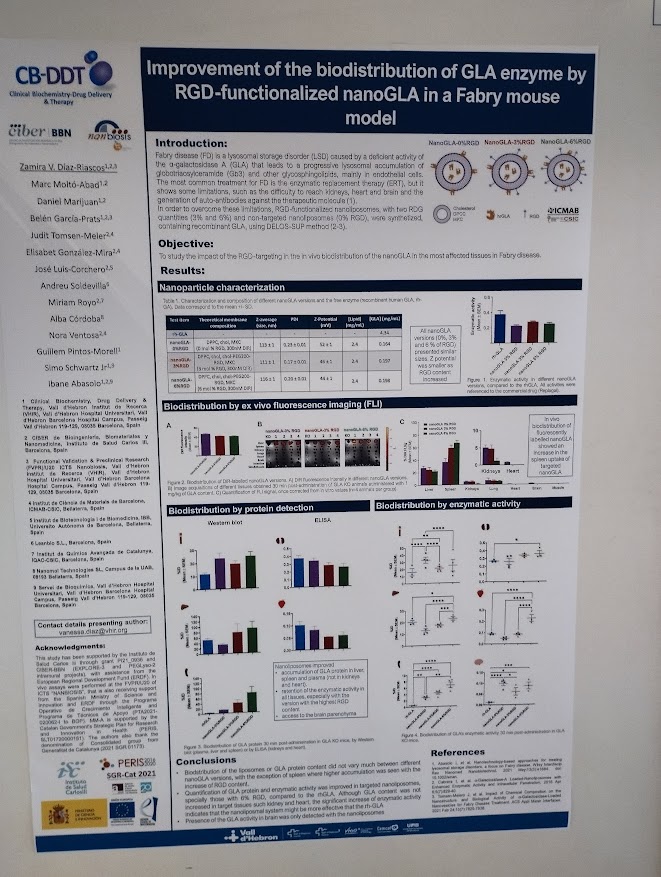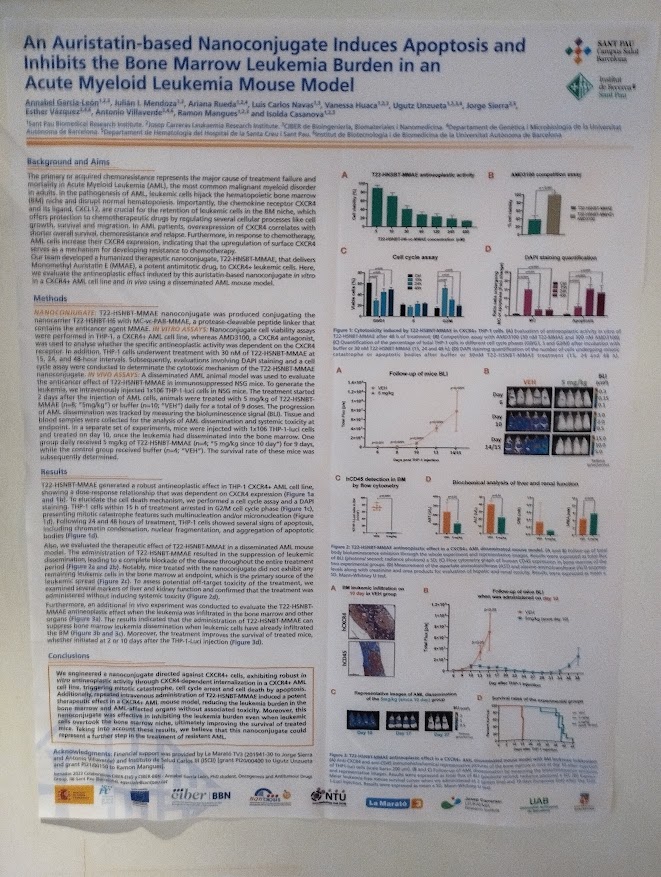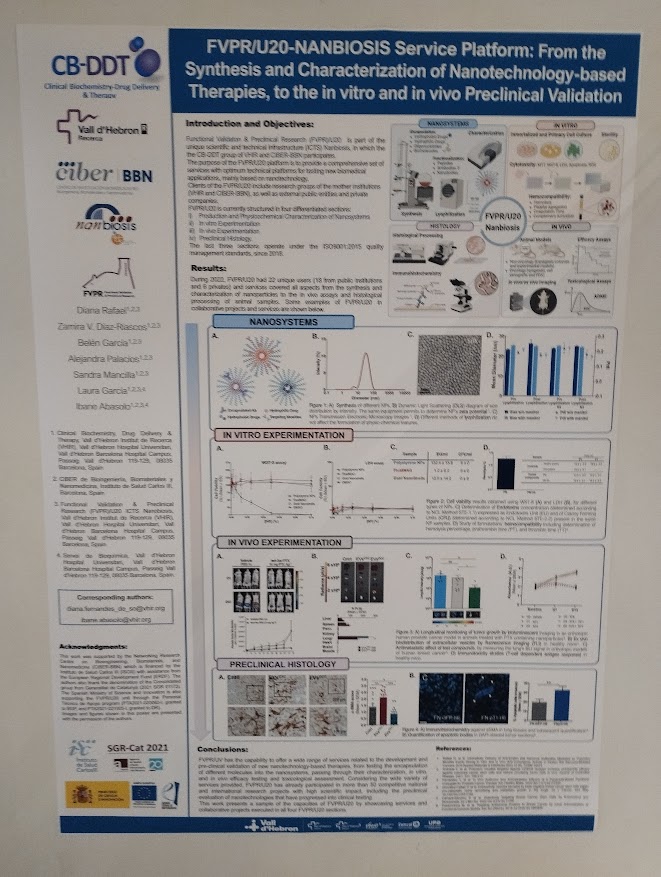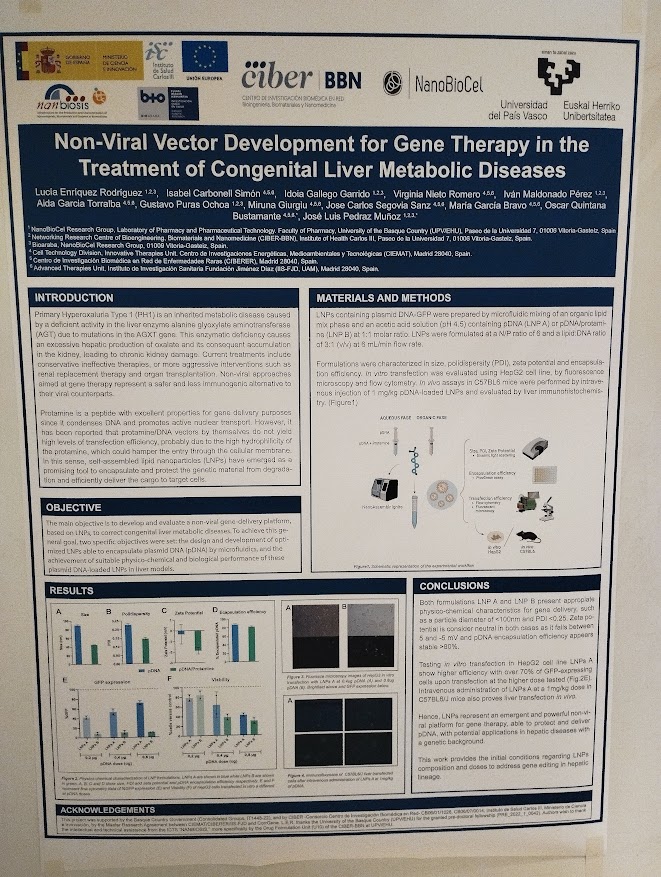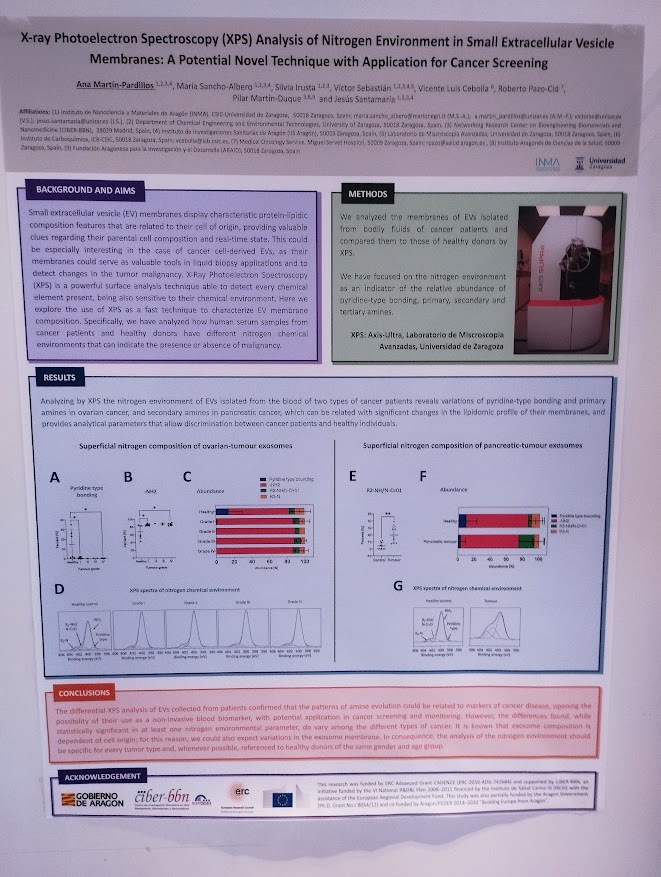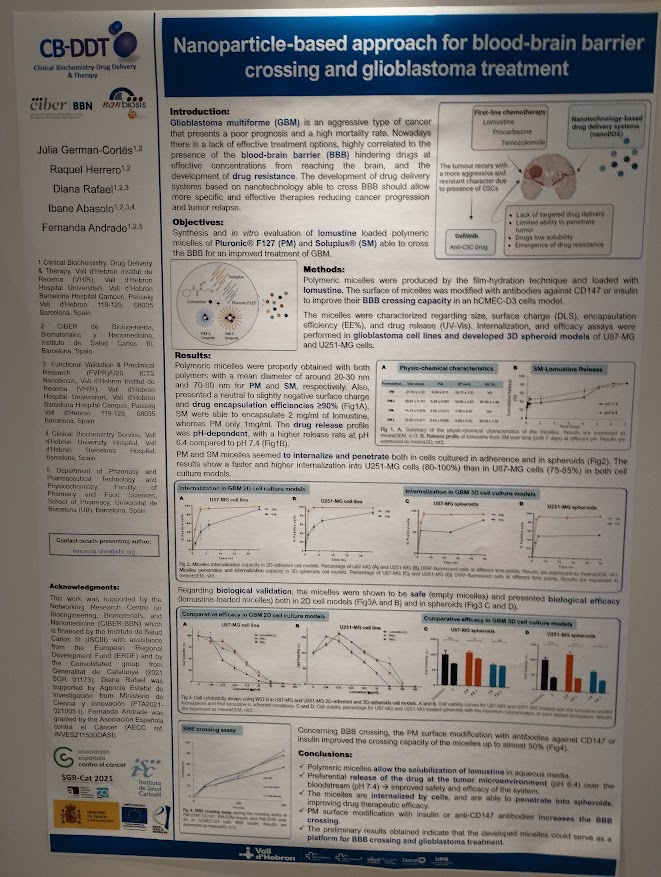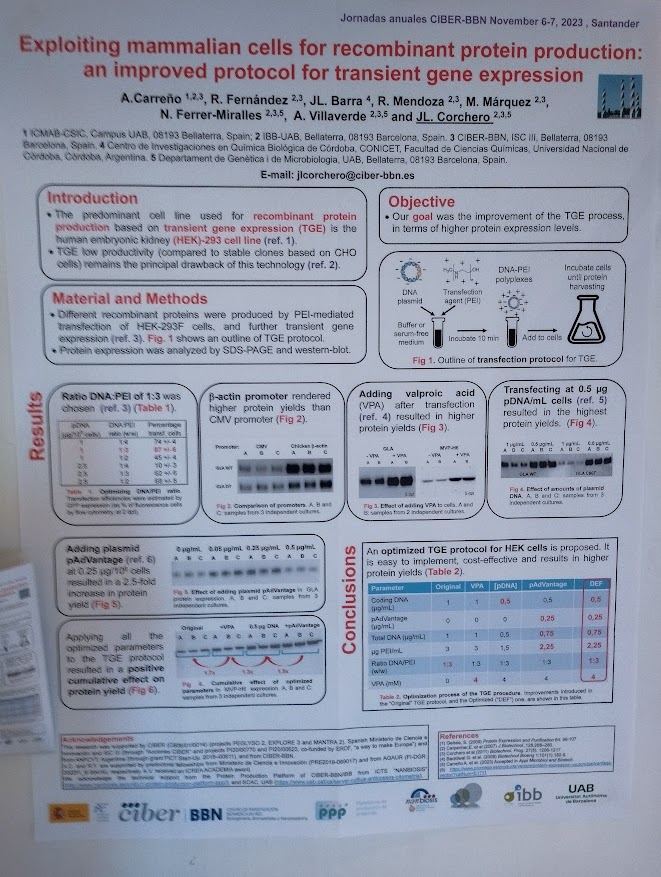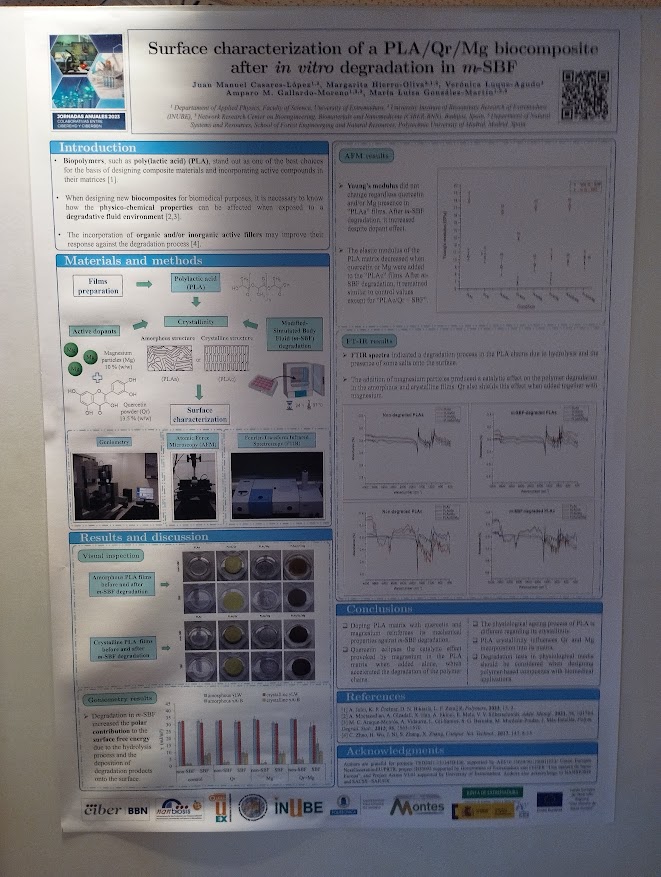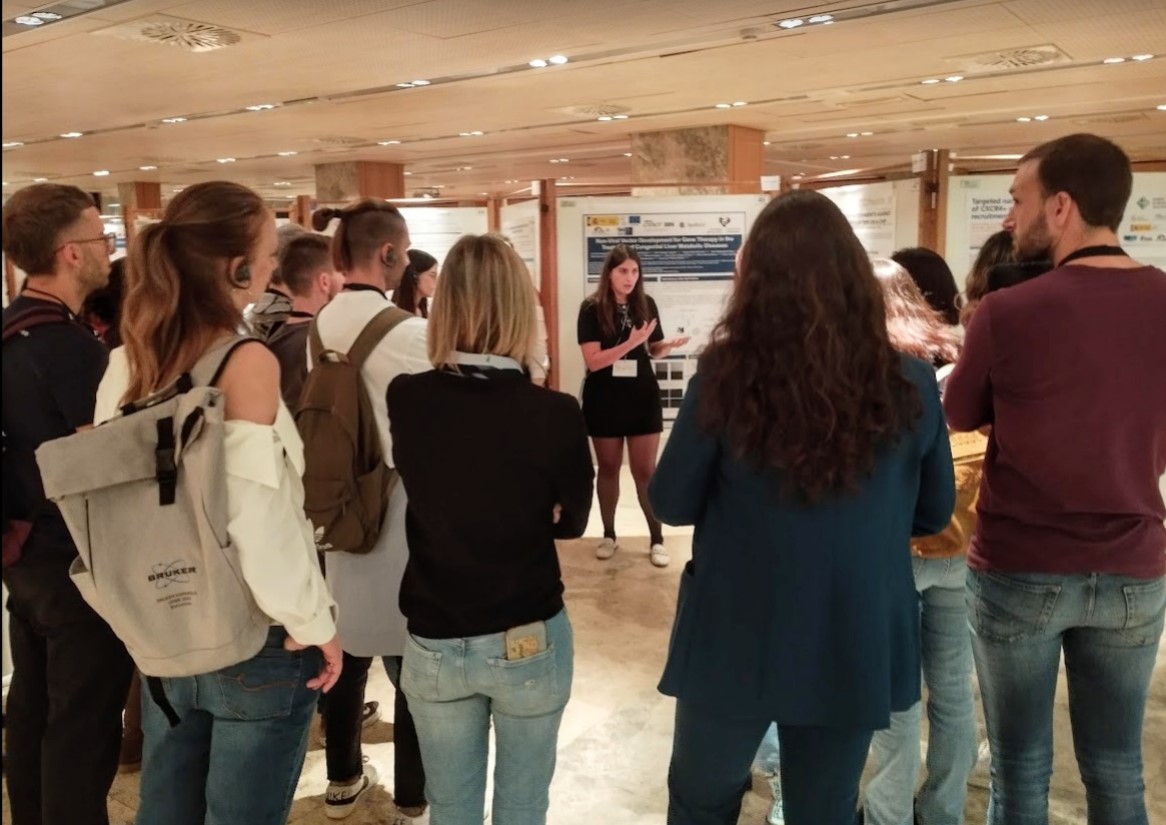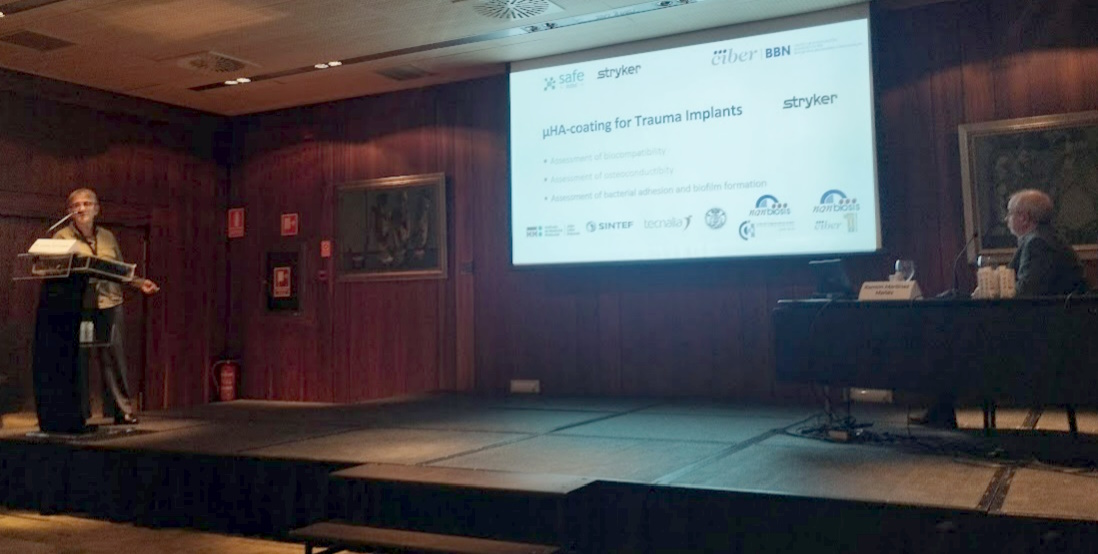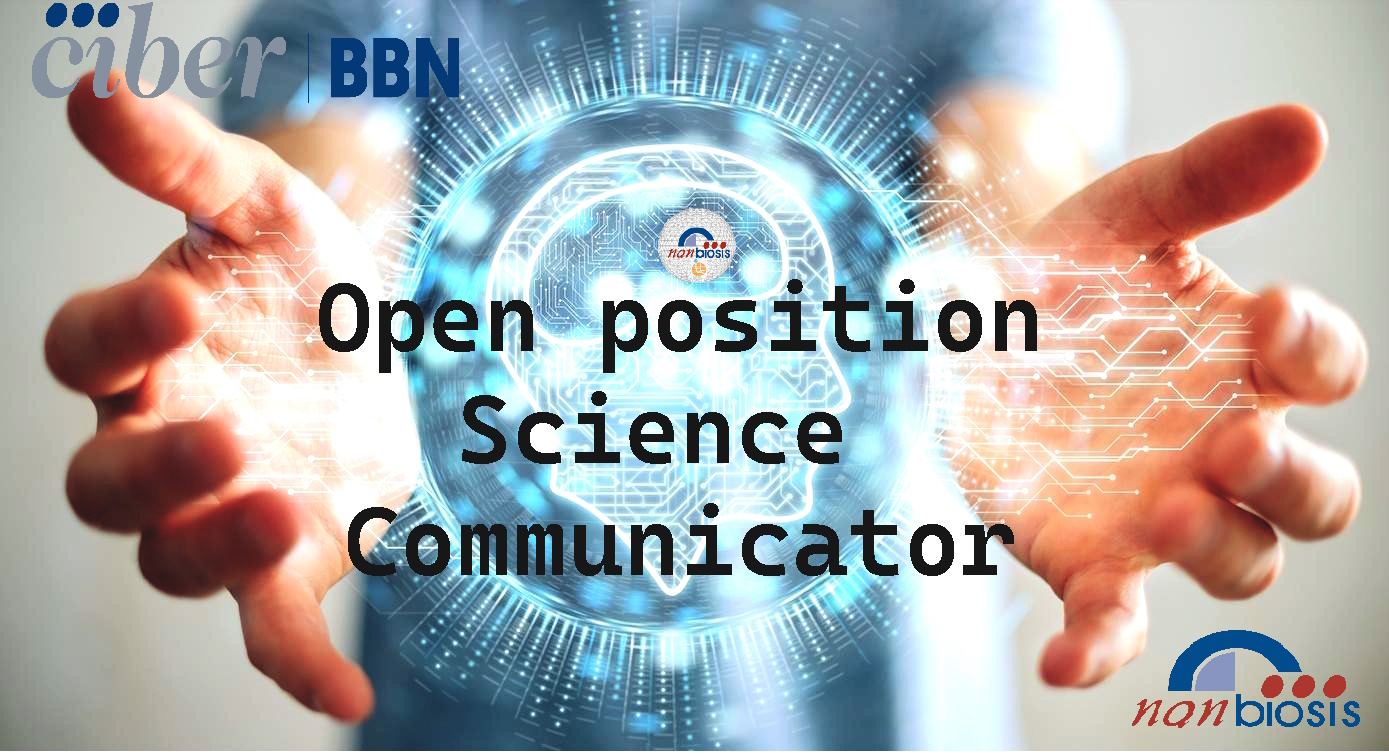NANBIOSIS U1 PPP invited to PEGS, the Protein & Antibody Engineering Summit
*Image explained by Merce Márquez Martínez, Coordinator of NANBIOSIS U1
The NBT group and Unit 1 of NANBIOSIS (Protein Production Platform, PPP), from CIBER-BBN and IBB-UAB, participated in the 15th PEGS Europe conference held in Lisbon from November 14th to 16th. PEGS, or the Protein & Antibody Engineering Summit, is a prestigious conference, organized by the Cambridge Healthtech Institute (CHI), focusing on protein engineering and its applications in drug discovery, development, and delivery. This conference serves as a valuable platform for knowledge exchange among researchers, scientists, industry experts, and professionals in the field of protein science.
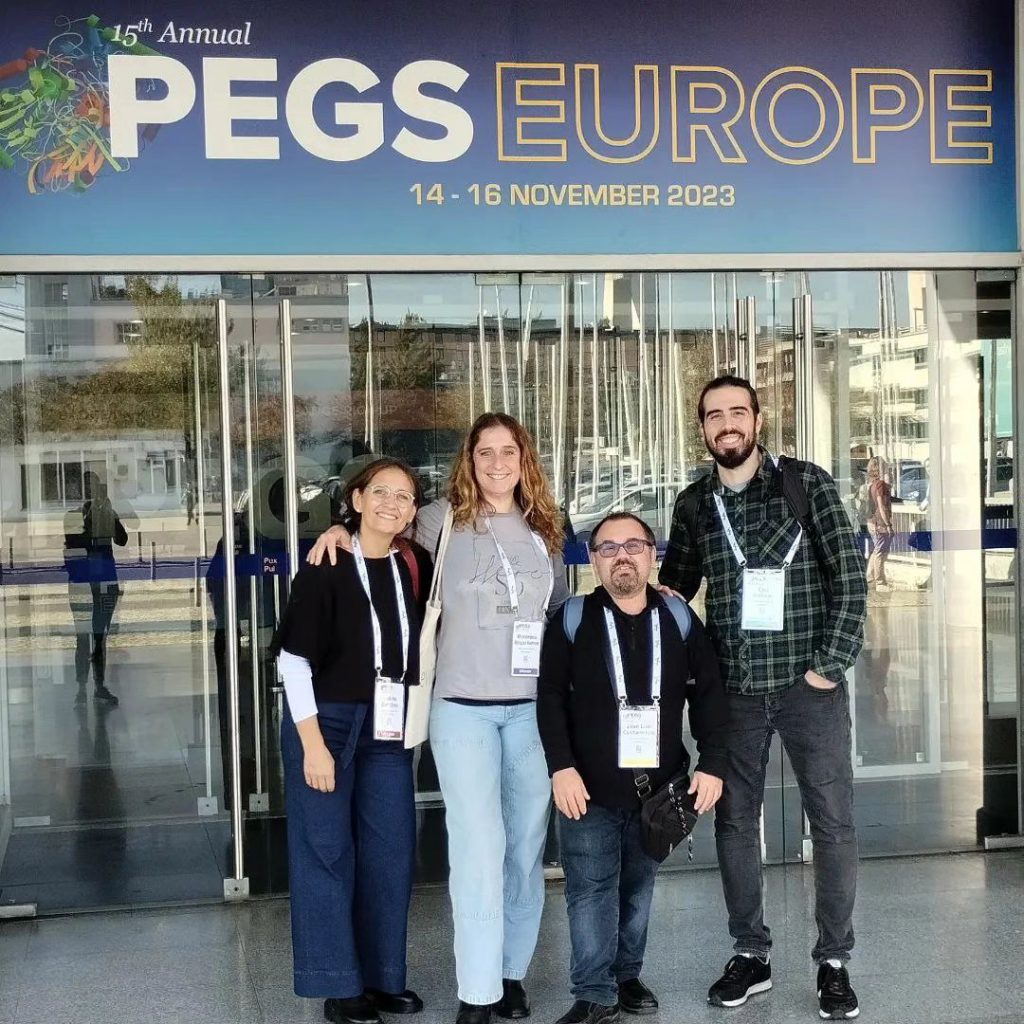
From left to right, Julieta María Sanchez, Merce Márquez, José Luis Corchero and Eloi Parlade
The conference typically includes workshops, seminars, keynote presentations, panel discussions, poster sessions, and exhibitions. These elements allow participants to delve into various aspects of protein engineering, covering topics such as novel technologies, therapeutic targets, biologics development, and innovative strategies for protein design and optimization. PEGS fosters networking, collaboration, and learning in the dynamic field of protein engineering.
The meeting featured parallel sessions covering various thematic areas like engineering, targets, bispecifics, immunotherapy, analytical methods, expression, machine learning, and training seminars. Notably, this year’s focus was on the application of antibodies as treatment platforms, particularly in oncology. Artificial intelligence topic, however, had a significant presence at the conference as a tool for the prediction of protein structures, understanding their functions, and accelerating drug discovery processes. Algorithms were discussed for analyzing extensive biological data to model protein behavior, predict protein folding patterns, identify potential drug targets, and design novel proteins with specific functions. Additionally, tools aiding in protein engineering, optimizing production methods, and facilitating the development of personalized medicine by analyzing individual variations in protein interactions were highlighted.
The NBT group, and PPP from NANBIOSIS, was the only Spanish research group invited to have an active participation in the meeting. Specifically, the group contributed invited oral presentations in the tracks of “cell line and systems engineering”, “Optimizing expression platforms” and “Protein process development”. These oral presentations, along with a poster, focused on presenting the latest results of the group in the field of microparticles as protein-only based platforms for drug delivery and optimizing the production of recombinant proteins in mammalian cells.
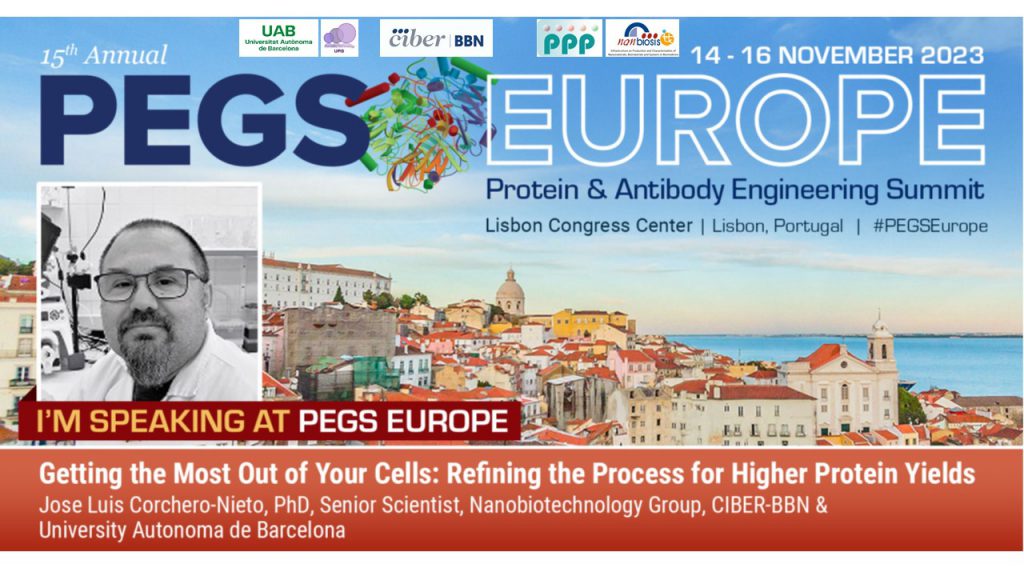
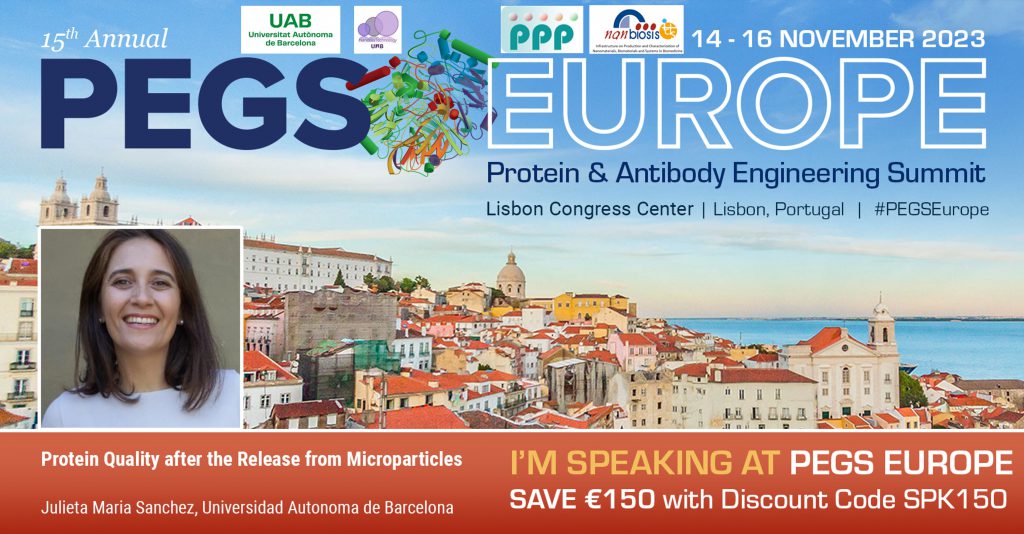
In addition, the Technical Coordinator of the NANBIOSIS’s Unit 1 (PPP) was invited as a chairperson to moderate and lead the session titled: “Overcoming expression and production challenges for unique proteins”.
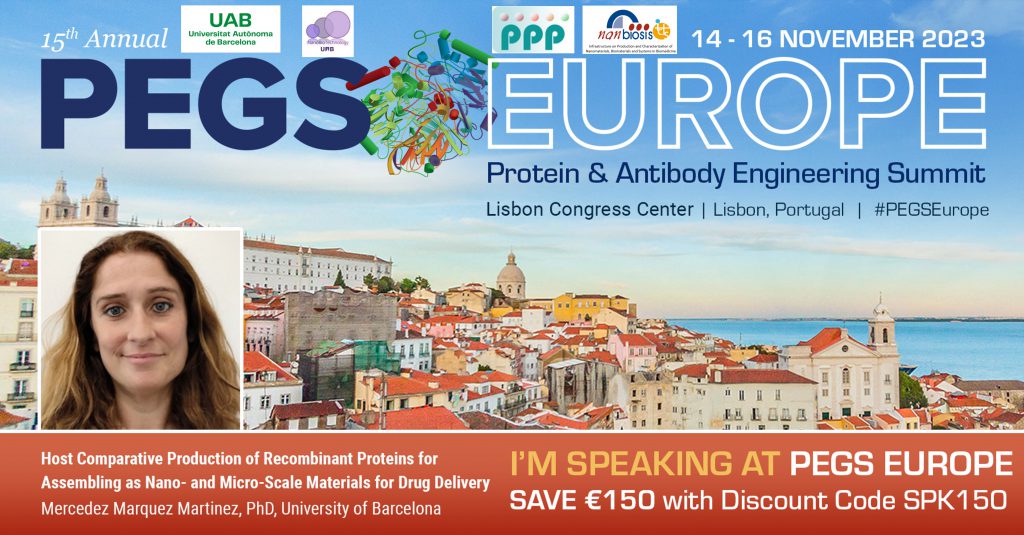
In this setting, connections were established with researchers who share an interest in our work, and there is an anticipation of forging new collaborations.
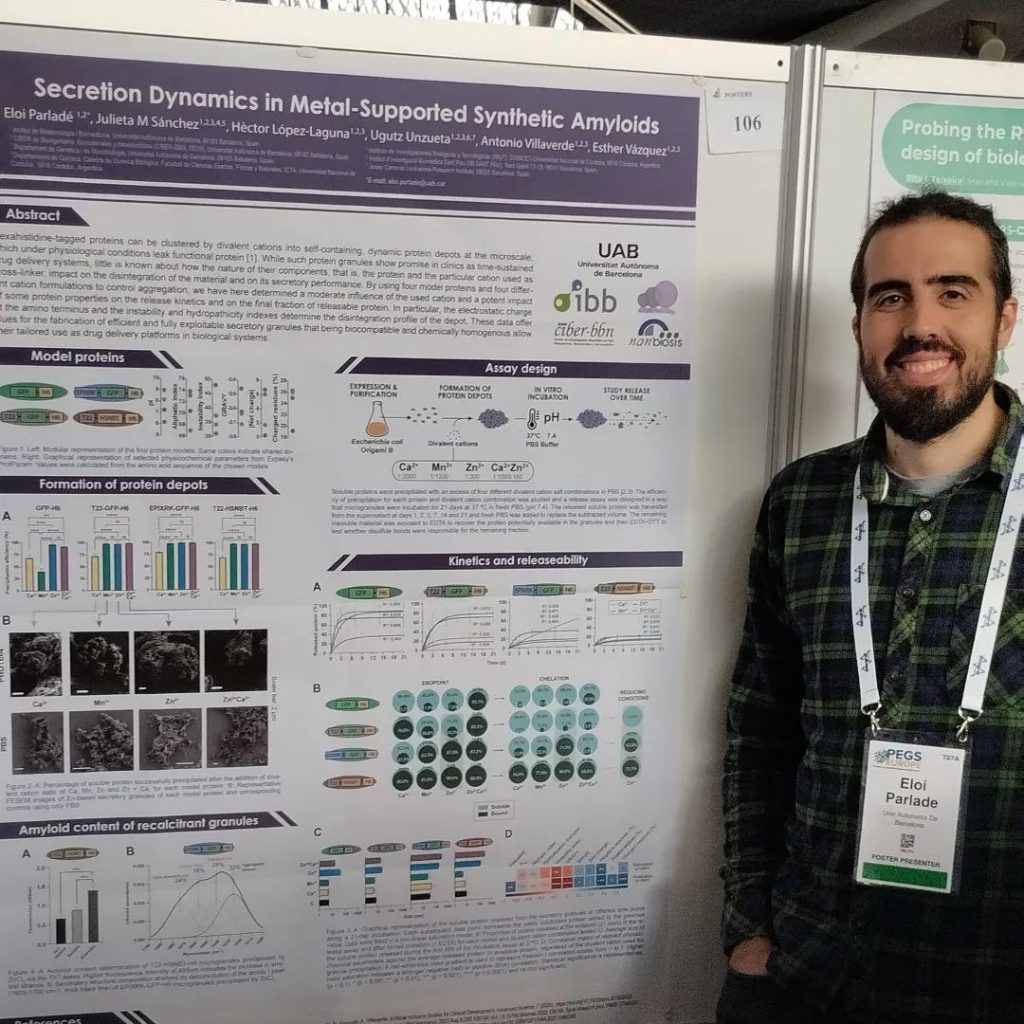
The upcoming PEGS conference scheduled for 2024 will be held in Barcelona, and the group looks forward to showcasing their latest findings once more.
*Image: Representation by AI of Artificial Microparticles: Robot generating microparticles with embedded DNA fragments. These particles on micro scale are mainly composed by proteins that self-assemble into these larger structures when cations are added. These particles are able to slowly disintegrate into the constitutive proteins, functioning as an effective platform for drug delivery in several medical applications. Specifically designed as carriers, they provide a sustained and continuous release of protein-based drugs over several days, ensuring controlled and gradual administration for therapeutic purposes.










